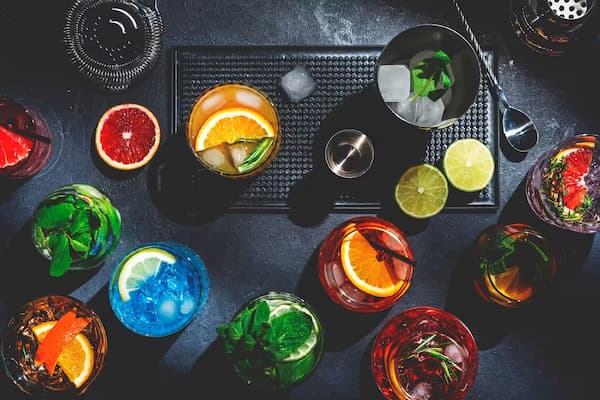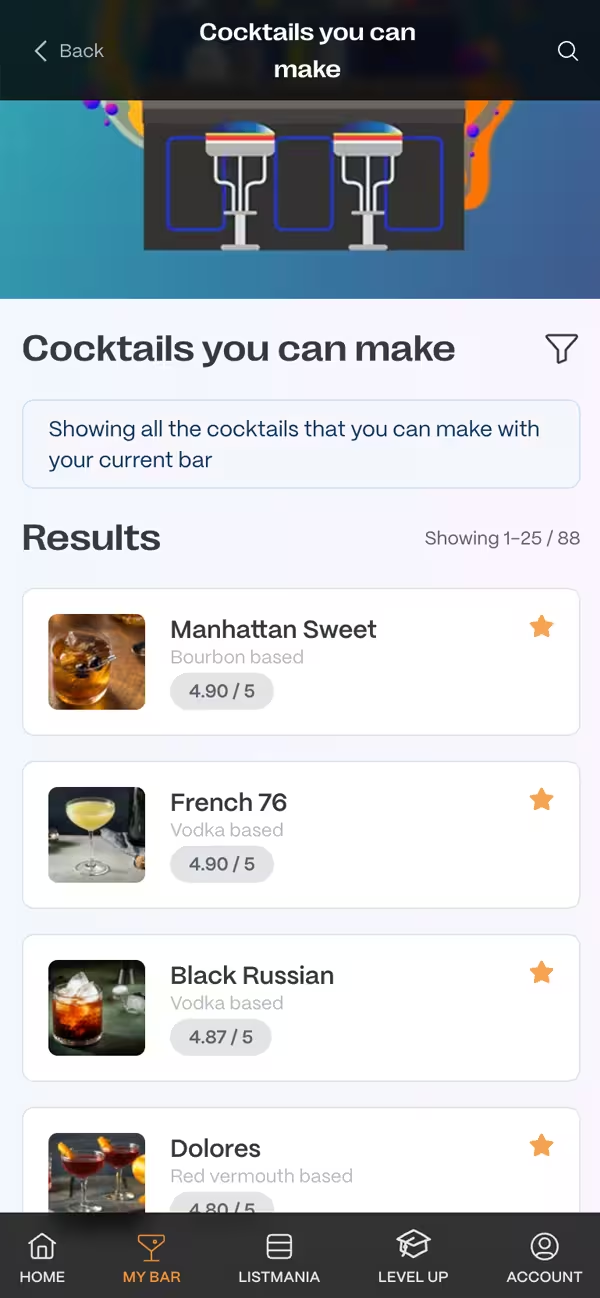Brandy
With Brandy you can make
Wisconsin's Sweet Secret
Brandy Old Fashioned
Brandy, Angostura Bitters, Sugar
Elegance in a glass.
Metropolitan
Brandy, White vermouth, Sugar / simple Syrup, Angostura Bitters
A citrusy nutty infusion.
Fog Cutter
White rum, Brandy, Dry gin, Sherry (Sweet), Orange juice, Lemon Juice, Orgeat Syrup
Warm, Spiced Perfection for Gatherings
Spiced Port & Brandy Punch
Brandy, Ruby Port, Cider, Cranberry Juice, Orange juice, Honey, Cinnamon, Cloves, Star Anise, Orange, Lemon
Spanish fiesta in a glass
Sangria
Brandy, Orange liqueur, Red Wine, Sugar / simple Syrup, Orange juice, Lemon Juice, Soda water
Creamy Comfort and Classic Elegance
Brandy Eggnog
Brandy, Sugar / simple Syrup, Milk, Egg
A punch of elegance in every sip.
BVD
Brandy, White vermouth, Dubonnet
Bold blend stirred to perfection.
Uncle Neil
Brandy, Campari, Bourbon, Red vermouth, White vermouth, Orange Bitters, Angostura Bitters
A creamy classic indulgence
Brandy Alexander
Brandy, Creme De Cacao (dark), Cream
Creamy luxury with a bubbly twist.
Champagne Flip
Brandy, Orange liqueur, Champagne / prosecco, Sugar / simple Syrup, Cream, Egg
Tropical Vibes in a Shared Glass
Scorpion Bowl
Brandy, White rum, Lemon Juice, Orange juice, Orgeat Syrup
We've got 11 cocktails that can be made with Brandy.
Find out what to make with Brandy
Q&A
What is the historical origin of Brandy?
Brandy's origins trace back to the Mediterranean region in the 12th century where it was distilled by alchemists as a medicinal potion. Its name stems from the Dutch word 'brandewijn', meaning 'burnt wine', referencing the process of distillation. Initially, it was distilled from grape wines but later included other fruits. Its evolution from a medicinal elixir to a respected alcoholic beverage occurred over centuries, with significant development in France, Spain, and other grape-growing regions.
How is Brandy different from other distilled spirits?
Brandy is distinctly made from fermented fruit juice, primarily grapes, while other spirits like vodka and whiskey are generally distilled from grain. The production process includes aging in wooden casks, often oak, which imparts a unique flavor profile to the brandy, including notes of fruit, spice, and oak. This aging process is crucial in developing its complex flavors and smoothness, distinguishing it from other spirits that may not require aging or use different aging methods.
What are the key steps in making a Brandy cocktail?
To make a Brandy cocktail, start by selecting a high-quality Brandy that complements the flavors of your cocktail. Mix the Brandy with other ingredients like vermouth, liqueur, or fresh juices as per your recipe. Use a cocktail shaker or stirrer for mixing, depending on the cocktail's texture and ingredient mix. Chill the mixture if needed, then strain into the appropriate glass, which could be a snifter, coupe, or rocks glass, depending on the drink. Finally, garnish to enhance both the flavor and presentation of the cocktail.
What is the best way to serve Brandy neat?
Serving Brandy neat is best done at room temperature in a snifter glass, which has a wide bottom and a narrow top. This design allows the Brandy to breathe and concentrates the aromas at the top of the glass, enhancing the tasting experience. Pour a standard serving of 2 ounces of Brandy into the snifter. Swirl gently to aerate the Brandy, allowing its flavors and aromas to open up. Take time to nosing the drink before sipping slowly to savor its complex flavors.
Are there any non-alcoholic substitutes for Brandy in cocktails?
Yes, there are several non-alcoholic substitutes for Brandy in cocktails, such as apple cider, grape juice, or non-alcoholic spirits designed to mimic Brandy's flavor profile. Apple cider or grape juice can add a fruity sweetness that resembles Brandy's base flavors, while specially crafted non-alcoholic spirits offer a more complex flavor profile designed to closely mimic Brandy's nuanced characteristics. Always consider the overall flavor balance of the cocktail when choosing a substitute.
Brandy Brands
Ingredients like Brandy
Other Brandy and Cognacs
How it works
Easily create your bar from the ingredients you have at home, and we'll show you what you can make with the ingredients you have to hand.
Once you've added this ingredient head to your My bar page and fill up everything else you have.
We'll also show you cocktails that can make by substituting what you have for one of the ingredients you don't, riffing on the original. Now go forth and create something delicious!












